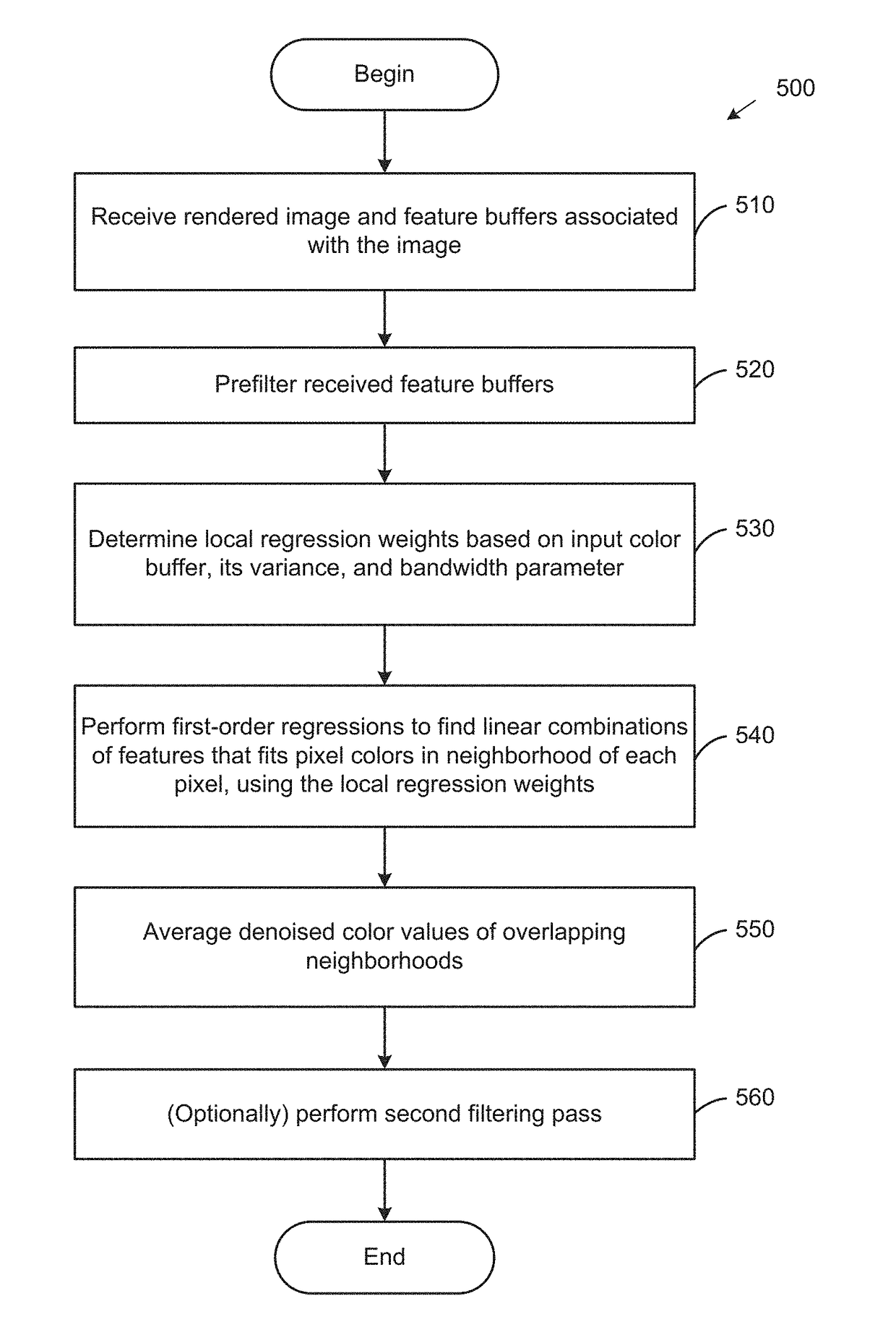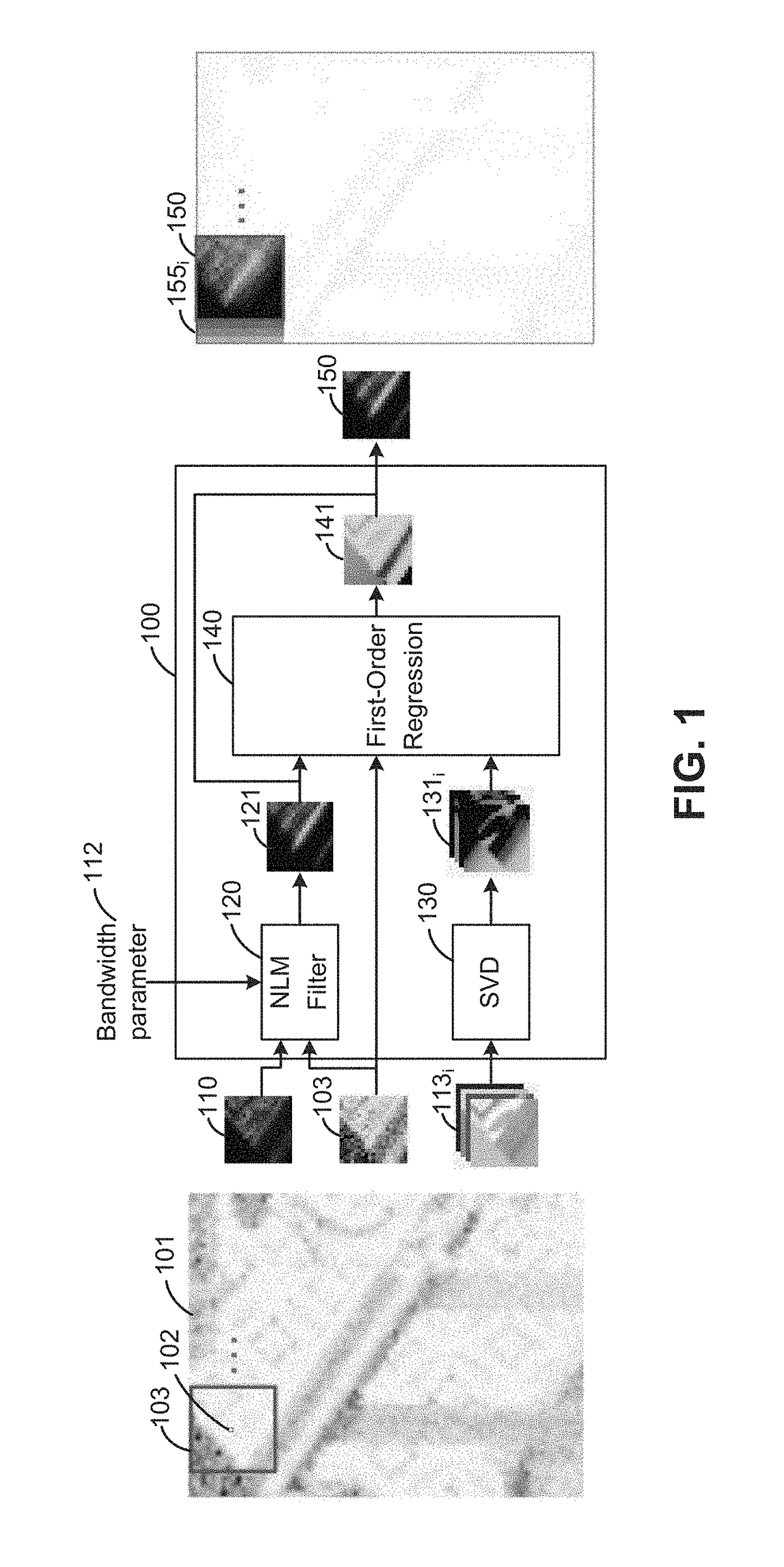Robust regression method for image-space denoising
a regression technique and image-space technology, applied in image enhancement, image analysis, instruments, etc., can solve the problems of inherently noisy image rendering using mc rendering techniques, and the computational cost of generating perceptually noise-free images can be prohibitively high for many applications such as movie production
- Summary
- Abstract
- Description
- Claims
- Application Information
AI Technical Summary
Benefits of technology
Problems solved by technology
Method used
Image
Examples
Embodiment Construction
[0013]Embodiments disclosed herein provide techniques for denoising (also referred to herein as “filtering”) images rendered via Monte Carlo (MC) rendering techniques. In one embodiment, a denoising application takes as input such rendered images and auxiliary feature buffers that encode additional image information such as surface positions, surface depths, surface normals, surface albedos, or distances to the camera. For each pixel in a received image, the denoising application performs a first-order regression in a predefined neighborhood of the pixel to find a linear combination of pixel features that fits pixel colors in the predefined neighborhood. In such a first-order regression, the local regression weight of each pixel in the neighborhood is determined using a metric which computes distances based on color values in patches around pixels being compared. Doing so restricts the regression to a local neighborhood in which pixel color is relatively similar and the linear model...
PUM
 Login to View More
Login to View More Abstract
Description
Claims
Application Information
 Login to View More
Login to View More - R&D
- Intellectual Property
- Life Sciences
- Materials
- Tech Scout
- Unparalleled Data Quality
- Higher Quality Content
- 60% Fewer Hallucinations
Browse by: Latest US Patents, China's latest patents, Technical Efficacy Thesaurus, Application Domain, Technology Topic, Popular Technical Reports.
© 2025 PatSnap. All rights reserved.Legal|Privacy policy|Modern Slavery Act Transparency Statement|Sitemap|About US| Contact US: help@patsnap.com



